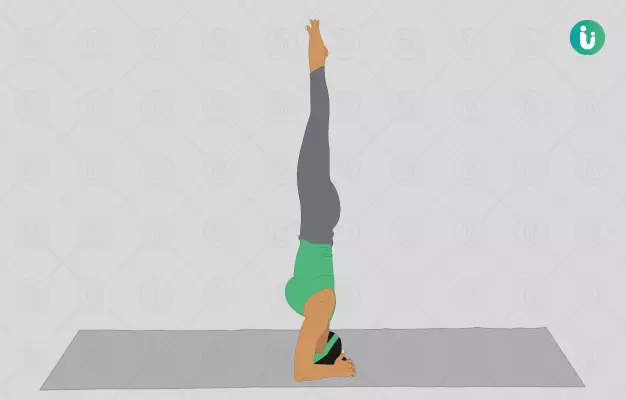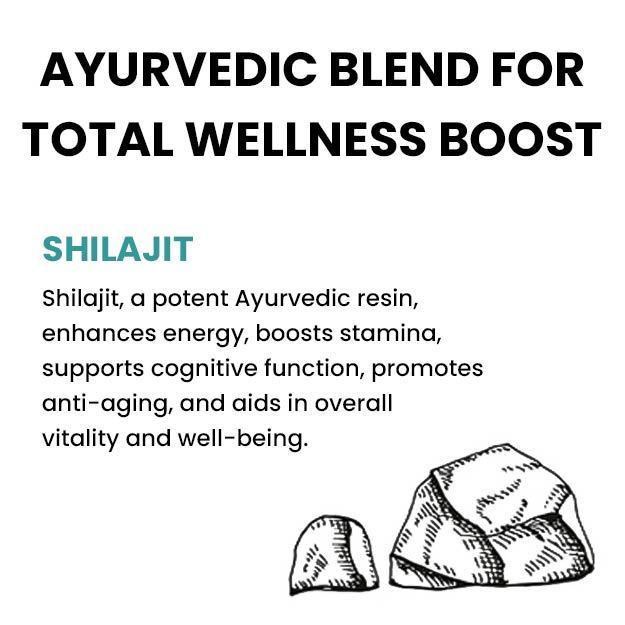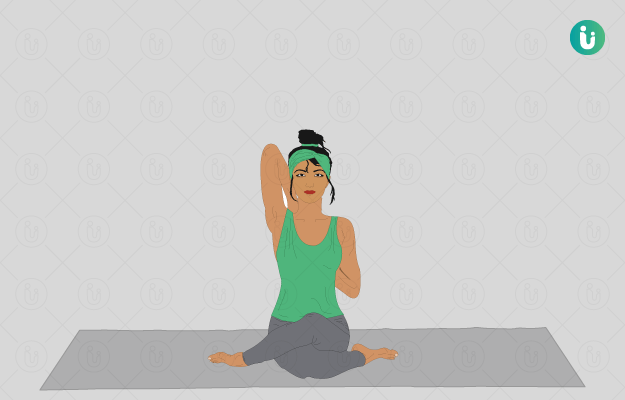Hey there, health adventurers! Ever wondered about that impressive headstand you see yogis doing? It's called Sirsasana, and it's quite the celebrity in the yoga world, often hailed as the "King of all Asanas." But is it really all it's cracked up to be? Does it truly deliver on all the amazing promises, or are there hidden challenges? Get ready to flip your perspective as we dive in and explore everything about this powerful pose together – from how to do it safely to who should absolutely avoid it. Let's unleash the knowledge surrounding Sirsasana, shall we?
- Is Sirsasana the King of All Yoga?
- Who Should Not Practice Sirsasana?
- When To Avoid Sirsasana?
- How To Do Sirsasana?
- Easy Way To Do Sirsasana
- What Time Is Best To Do Sirsasana?
- What Happens If We Do Sirsasana Daily?
- Benefits Of Sirsasana
- What Disease Does Sirsasana Cure?
- Does Sirsasana Regrow Hair?
- Can Sirsasana Improve Eyesight?
- Can Sirsasana Improve Height?
- Does Sirsasana Glow Skin?
- Is Sirsasana Good For Weight Loss?
- Is Sirsasana Anti Aging?
- What To Do Before Sirsasana?
- Which Asana Is Recommended To Do After Sirsasana?
- What Are The Disadvantages of Sirsasana?
- Study About Cervical Due To Sirsasana
- Is Sirsasana Risky?
- What Are The Precautions For Sirsasana?
- Summary
Is Sirsasana the King of All Yoga?
So, you've heard the whispers, right? Sirsasana, the headstand, often gets crowned as the "King of all Asanas" in yoga. Why such a grand title? Well, it's believed to literally flip your perspective, sending a fresh wave of energy and blood flow to your brain. This can lead to a feeling of invigoration, enhanced mental clarity, and even a boost in overall well-being. It's thought to stimulate various glands and systems in the body, bringing a sense of balance and vitality. But like any good monarch, it comes with its own set of rules and responsibilities. Let's find out if this yoga pose truly deserves its royal status!
Who Should Not Practice Sirsasana?
This is a critical section, so listen up! Sirsasana is NOT for everyone. Individuals with high blood pressure, heart conditions, glaucoma, retinal detachment, or any eye conditions should absolutely avoid Sirsasana. The inversion can significantly increase pressure in the head and eyes, potentially worsening these conditions. If you have a history of neck injuries, cervical disc problems, or any spinal issues, it's a definite no-go unless cleared by a specialist. Pregnant women should also avoid it, especially if they weren't doing it regularly before pregnancy. Anyone with severe headaches, migraines, or dizziness should also steer clear. When in doubt, always consult with a doctor or a qualified yoga instructor.
(Read More: Yoga: Benefits, types, importance and rules)
When To Avoid Sirsasana?
Beyond the conditions mentioned above, there are times when it's wise to hit pause on your headstand practice. If you're feeling unwell, have a fever, or are experiencing a cold or sinus congestion, it's best to skip it, as it can worsen congestion. Avoid it if you're feeling dizzy or nauseous. During menstruation, some women prefer to avoid inversions, though this is a personal choice. And, of course, if you've recently eaten a large meal, give yourself plenty of time to digest before attempting Sirsasana. Listen to your body – it's always giving you signals!
How To Do Sirsasana?
Alright, let's break down how to get into this majestic pose, step by step.
Step 1: Set Your Foundation
First, imagine you're kneeling down comfortably on your yoga mat. Now, place your forearms on the mat, making sure they're about shoulder-width apart. Next, interlock your fingers firmly to form a sturdy cup. This hand and forearm position creates a nice, stable triangle – this is your essential base, so make sure it feels absolutely solid beneath you.
Step 2: Position Your Head
Gently place the very crown of your head onto the mat, right into that cup you've made with your hands. This is crucial: remember, don't dump all your weight here! The important part is to press firmly down into your forearms and elbows, so most of your body's weight is supported by them, not your delicate neck. Think of your arms doing the heavy lifting, not your head.
Step 3: Lift Your Hips
From your stable head and arm position, slowly walk your feet closer towards your chest, simultaneously lifting your hips high towards the ceiling. You're aiming to stack your hips as much as possible directly over your shoulders, creating a strong, inverted "V" shape with your body. Feel for that stability building in your core and arms as you shift your weight.
Step 4: Tuck and Balance
When you feel stable and your hips are nicely stacked over your shoulders, gently lift your toes off the floor, tucking your knees towards your chest. This is a key balancing point where you find your sweet spot. Take a moment here to find your equilibrium, engaging your core muscles powerfully to prevent any wobbling.
Step 5: Extend Upwards
Once you find your balance in this tucked position, slowly and with incredible control, straighten your legs towards the ceiling. Imagine a perfectly straight line from your shoulders, through your hips, all the way to your heels. Breathe deeply and focus on maintaining your balance, keeping your core engaged and your arms pressing down.
Step 6: Coming Down
Coming down is just as important as going up, if not more so! To exit the pose, reverse the steps slowly and mindfully. Gently bend your knees back towards your chest, then slowly and with control lower your feet back to the mat. Take your time. Remember, slow and steady wins the race here, ensuring a safe and controlled exit from this powerful posture!
(Read More: The Best Yoga Poses for PCOS Relief and Hormonal)
Easy Way To Do Sirsasana
Thinking about a shortcut to headstand glory? While there aren't truly "easy" ways to do Sirsasana without proper foundation and practice, you can definitely approach it in stages to make it more accessible and safer. Start by getting really comfortable with the forearm and hand positioning, making sure your base is super solid and stable. You can practice this against a wall. Then, try just placing your head and forearms down, and lifting only your hips high, keeping your feet on the ground. Next, practice just lifting your knees to your chest and finding balance there without fully extending your legs. You can even try doing it against a wall for support initially, allowing your feet to slide up the wall as you lift. This way, you build strength, confidence, and muscle memory gradually, without putting too much strain on your neck or fear of falling. It’s all about building up that core strength and understanding the balance points before going full "King of Asanas”.
What Time Is Best To Do Sirsasana?
When's the perfect time to stand on your head? Many yoga practitioners and traditional texts suggest doing Sirsasana in the morning, after you've emptied your bowels and before you've had a heavy meal. Why then? The idea is that it can kickstart your day with a powerful burst of energy and mental clarity, setting a positive tone. Plus, your stomach isn't busy digesting, which can feel a bit awkward or uncomfortable when you're upside down! Some also believe the morning stillness offers a more focused environment. However, ultimately, listen to your body and your schedule. If evenings work better for you, and you feel comfortable and energized doing it then, that's perfectly fine too. The most important thing is to be consistent and to do it when you feel most refreshed, clear-headed, and ready for the challenge.
What Happens If We Do Sirsasana Daily?
If you commit to daily Sirsasana, you might notice some interesting changes, both physical and mental! Many people report feeling significantly more energized, focused, and even experience a deeper sense of emotional balance throughout their day. The increased blood flow to the brain is often credited for these cognitive and mood-boosting benefits. Physically, you might find your core strength improving dramatically, as it's absolutely crucial for holding the pose stably. Your shoulder and arm strength will also get a fantastic workout. Plus, the inverted position can gently assist with lymphatic drainage, which is your body's way of getting rid of waste products, potentially boosting your immune system. However, like any daily practice, consistency is key, and so is listening to your body to ensure you're not overdoing it or ignoring any signals of discomfort.
Benefits Of Sirsasana
Beyond being an impressive feat, Sirsasana is touted for a whole host of fantastic benefits! As we mentioned, it's believed to significantly improve blood circulation, especially to the brain, which can potentially enhance memory, concentration, and overall cognitive function. Many practitioners swear by its ability to reduce stress, anxiety, and even mild depression, promoting a profound sense of calm and well-being by stimulating the nervous system. Physically, it can strengthen your core muscles, shoulders, and arms. The inversion can also aid in relieving pressure on your lower back and legs, and some believe it helps with digestion and keeps your adrenal glands healthy. It's a full-body and mind invigorator!
What Disease Does Sirsasana Cure?
This is where we need to pump the brakes a little. While yoga, including Sirsasana, offers incredible health benefits and can be a powerful tool for wellness, it's crucial to understand that yoga postures are not a direct cure for specific diseases. They are complementary practices that support your body's natural healing abilities and promote overall health. For instance, while Sirsasana might help reduce stress, which can be a factor in many ailments, it won't "cure" clinical depression. Similarly, it can improve circulation, but it won't directly cure conditions like hypertension or diabetes. Always consult with a healthcare professional for the diagnosis and treatment of any medical condition. Yoga is a fantastic addition to a healthy lifestyle, but it's not a magic bullet for curing diseases.
(Read More: Yoga for Children: Building Strong Bodies and Calm Minds)
Does Sirsasana Regrow Hair?
Ah, the age-old question! The idea here is that by increasing blood flow to the scalp, Sirsasana might stimulate hair follicles and potentially promote hair growth or prevent hair loss. While it's true that good blood circulation is essential for healthy hair, and a headstand certainly gets blood flowing to your head, there is no definitive scientific evidence or clinical research to prove that Sirsasana directly regrows hair or stops baldness. Many factors contribute to hair health, including genetics, diet, and hormones. While practicing Sirsasana might contribute to overall well-being, which indirectly supports healthy hair, it's not a guaranteed solution for hair regrowth. Don't expect to grow a full head of hair just by doing headstands!
Can Sirsasana Improve Eyesight?
Similar to the hair growth theory, some believe that the increased blood flow to the head during Sirsasana can benefit the eyes and potentially improve eyesight. The thought is that better circulation delivers more oxygen and nutrients to the eye muscles and optic nerves. However, much like hair regrowth, there is no robust scientific evidence to confirm that Sirsasana directly improves eyesight or corrects vision problems like nearsightedness or farsightedness. If you have concerns about your vision, always consult an ophthalmologist. While a healthy body and good circulation contribute to overall well-being, including eye health, Sirsasana isn't a substitute for corrective lenses or medical treatment for eye conditions.
Can Sirsasana Improve Height?
Let's address this one straight up: No, Sirsasana cannot improve your height. Our height is primarily determined by our genetics and the length of our bones, which fuse after puberty. Once your growth plates have closed, no amount of stretching, yoga, or standing on your head will make you taller. While yoga can improve posture, making you stand taller and perhaps look a bit longer due to better spinal alignment, it won't actually add inches to your skeletal structure. So, if you're looking to gain height, Sirsasana isn't the trick!
Does Sirsasana Glow Skin?
Now this is an interesting one! While there's no direct scientific proof, many yoga practitioners swear by the "yoga glow," and Sirsasana might play a role in it. The increased blood flow to your face during a headstand could potentially bring more oxygen and nutrients to your skin cells, which can contribute to a healthier, more radiant complexion. Think of it as a natural flush that nourishes your skin from within. Plus, by reducing stress, which is a common trigger for skin issues, Sirsasana could indirectly help clear up breakouts or improve skin tone. So, while it's not a guaranteed "glow in a bottle," a consistent Sirsasana practice might just contribute to that healthy, happy, post-yoga radiance!
(Read More: How to Improve Blood Circulation for Better Oxygen)
Is Sirsasana Good For Weight Loss?
Is Sirsasana your secret weapon for shedding pounds? While it's a powerful pose, Sirsasana alone isn't a primary weight loss exercise. While it does engage your core and build strength, it's not a high-intensity cardio workout that burns a lot of calories. For effective weight loss, a combination of regular cardiovascular exercise, strength training, and a balanced diet is essential. However, the overall benefits of Sirsasana, such as stress reduction and improved digestion, can indirectly support a healthy metabolism and a positive mindset, which are crucial for any weight management journey. Think of it as a supportive player, not the main star, in your weight loss efforts.
Is Sirsasana Anti Aging?
Could Sirsasana be the fountain of youth? Many yogis believe that inversions like Sirsasana have anti-aging properties. The theory is that by reversing the effects of gravity on your face and body, it helps reduce wrinkles, improves circulation, and potentially slows down the aging process of cells. The increased blood flow to the brain and improved glandular function are also cited as contributors to a more youthful feeling and appearance. While it might not stop time, the stress reduction, improved circulation, and overall vitality that Sirsasana can bring definitely contribute to looking and feeling younger. A calm mind and a well-nourished body are excellent anti-aging tools, and Sirsasana certainly contributes to both!
What To Do Before Sirsasana?
Before you attempt your headstand, it's super important to prepare your body! Think of it like warming up for any intense activity. You'll want to gently stretch your neck and shoulders to increase their flexibility and prevent strain. Poses like Cat-Cow, Downward-Facing Dog, and Dolphin Pose are fantastic for warming up your shoulders and strengthening your arms and core – all crucial for Sirsasana. You also want to make sure your core is engaged and ready. A few minutes of gentle stretching and building foundational strength will make your headstand practice much safer and more enjoyable. And, of course, make sure you haven't eaten a heavy meal recently!
Which Asana Is Recommended To Do After Sirsasana?
Coming out of an inversion like Sirsasana requires a bit of counter-balancing to bring your body back to equilibrium. After your headstand, it's usually recommended to rest in Child's Pose (Balasana). This gentle forward fold allows your neck to relax, your blood pressure to normalize, and your body to re-center. You can also follow up with a brief Savasana (Corpse Pose) for complete relaxation. The key is to gradually transition back to an upright position and give your body a moment to integrate the effects of the inversion.
What Are The Disadvantages of Sirsasana?
While Sirsasana is a fantastic pose, it's not without its potential downsides, especially if done incorrectly or by individuals with certain conditions. The main concern is placing too much weight or strain on the neck, which can lead to cervical spine injuries, disc problems, or nerve compression. If your shoulders and core aren't strong enough, you might compensate by putting undue pressure on your neck. There's also the risk of falling, which could lead to head injuries. For some, the increased blood pressure to the head can be problematic. It's truly a pose that demands respect and proper technique.
(Read More: Muscle Weakness: symptoms, causes, treatment, medicine)
Study About Cervical Due To Sirsasana
This study, titled "Compressive Cervical Myelopathy Due To Sirsasana, A Yoga Posture: A Case Report," was published in The Internet Journal of Neurology, Volume 6, Number 1, in 2006. The authors are P. Sethi, A. Batra, N. Sethi, J. Torgovnick, and E. Tortolani.
The case report details a 63-year-old male who developed compressive cervical myelopathy, characterized by tingling, numbness, weakness, stiffness in all four limbs, and urinary issues. This condition was attributed to his 25-year daily practice of "Sirsasana" (headstand) yoga posture. X-rays revealed anterolisthesis at C4-C5 with a block vertebra at C5-C6, and MRI showed cervical cord compression at C3-C4 and C4-C5. The study highlights that while yoga offers health benefits, improper practice or certain predispositions can lead to serious complications. In the case of Sirsasana, the normal spinal biomechanics can be disturbed, with the load potentially being transmitted through weaker parts of the vertebral column, especially if existing spinal issues (like the fixed C5-C6 joint in this patient) force movements to occur at higher, less stable joints.
This is a single case report, not a survey or a study with a large sample size. The "results" are the clinical presentation, imaging findings (X-ray and MRI), and the subsequent diagnosis of compressive cervical myelopathy linked to the long-term practice of Sirsasana in the described patient.
The study primarily relies on the detailed clinical presentation, physical examination, and diagnostic imaging (X-ray and MRI) of the patient to establish the link between Sirsasana and the development of compressive cervical myelopathy. It also draws upon existing biomechanical principles of the spine and references other reported complications related to yoga postures.
The case report emphasizes that yoga, like any other exercise, can lead to injuries if not practiced under proper supervision and with caution. It specifically recommends avoiding headstands and shoulder stands for individuals with uncontrolled hypertension due to the risk of stroke, and advises against back-bending postures for those with disc problems. The authors stress the importance of awareness among physicians and physiotherapists regarding the potential serious complications of seemingly innocuous exercises like yoga. They highlight the need for proper supervision and careful consideration of an individual's physical condition before embarking on a yoga regimen.
This case report effectively illustrates a rare but significant complication of "Sirsasana" (headstand) yoga posture, leading to compressive cervical myelopathy in a 63-year-old male. It underscores the critical need for proper technique and supervision in yoga practice, particularly for complex or inverted postures, and highlights the importance of considering individual health conditions and predispositions to prevent serious injuries. The study serves as a valuable cautionary tale for both yoga practitioners and healthcare professionals.
Is Sirsasana Risky?
Yes, to be completely honest, Sirsasana can be risky if not practiced correctly and with proper precautions. The primary risk lies in potential injury to the cervical spine (your neck). Putting too much weight on your head or collapsing into your neck can lead to serious issues, including disc herniation, nerve compression, and even more severe spinal damage. There's also the risk of falling and hitting your head. However, with proper instruction from a qualified teacher, building foundational strength, and respecting your body's limits, the risks can be significantly minimized. It's a powerful pose that demands respect and careful progression.
(Read More: Ancient Beauty Secrets: Home Remedies for Glowing Skin)
What Are The Precautions For Sirsasana?
So, how do we practice this powerful pose safely? Plenty of precautions!
- Learn from a Certified Instructor: This is perhaps the most important tip. Don't try to learn Sirsasana from a book or video alone. A good teacher can spot misalignments and provide personalized guidance.
- Build Foundation First: Ensure you have strong arms, shoulders, and a stable core before attempting the full pose. Practice Dolphin Pose and other preparatory poses.
- Use Proper Alignment: Always aim for a strong base with your forearms and hands, and distribute your weight through your shoulders and arms, not your head.
- Listen to Your Body: If you feel any pain, sharp sensations, or discomfort in your neck, stop immediately.
- Start with Wall Support: Using a wall can provide stability and confidence as you build strength and balance.
- Don't Rush: Take your time to get into and out of the pose. Rushing increases the risk of injury.
- Avoid Overdoing It: Especially when you're starting, hold the pose for shorter durations and gradually increase as you get stronger.
- Avoid Full Stomach: As mentioned, practicing on an empty or light stomach is best.
- Know Your Limits: Be aware of your medical conditions and if Sirsasana is contraindicated for you.
Summary
So, there you have it – a deep dive into the world of Sirsasana, the "King of all Asanas." While it truly offers a plethora of potential benefits, from boosting energy and focus to potentially contributing to radiant skin and an anti-aging feeling, it's by no means a magic cure for diseases or a height-increasing trick! More importantly, Sirsasana demands respect, proper preparation, and careful execution. It carries inherent risks, especially to the delicate neck, if not done correctly. The key takeaways are to always learn from a qualified instructor, build a strong foundation, listen intently to your body's signals, and be aware of any conditions that might make this inversion unsafe for you. When approached with wisdom and caution, Sirsasana can indeed be a powerful and transformative addition to your yoga practice, offering unique physical and mental advantages. Just remember, your safety and well-being always come first!





































